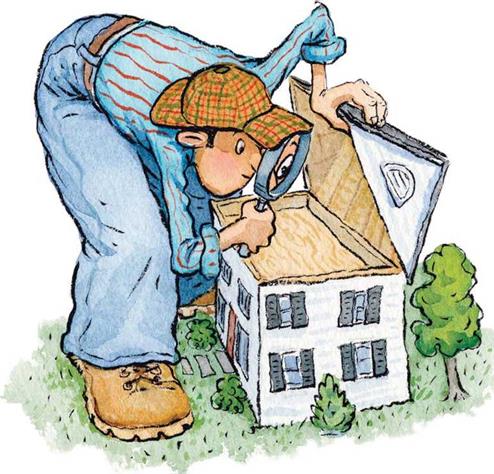Home Remedies for Energy Nosebleeds
■ BY BRUCE HARLEY
|
M |
y friend Terry Brennan told me that on his first job as a mason’s tender he learned two things: "Whatever I did was wrong," and "If the work wasn’t going to show, don’t strike the joints" because it didn’t have to be pretty. Now, not taking the time to smooth out a mortar joint that no one will see may not rank as a great offense. But the fact is, many things that go wrong in home building go wrong where sloppy work is done because "it’s not going to show, so it doesn’t matter." I know this because as an energy consultant, I plug the same nosebleeds in new and old homes alike. We’re good at cutting construction costs but bad at building houses that serve their owners well, minimize operating costs, and also reduce pollution.
Gaps in the Construction Sequence Cause Many Problems
People think windows and doors are the biggest leaks in a house because windows and doors are the most visible holes. But even old windows and doors are relatively small holes. In reality, the majority of energy leaks happen in places you can’t see, where one subcontractor’s work ends and another’s begins: behind the drywall, up in the attic, or down in the crawlspace. Even when each trade does its job well, problems can occur because nobody sees the big picture. The way the work fits together is as significant as the work itself.
The gaps between subs’ responsibilities usually translate into gaps in a house’s thermal boundary. These gaps are addressed in current building codes, but building inspec
tors can’t always offer protection. Sometimes they don’t understand; sometimes they just don’t enforce energy codes. The architect, the general contractor, or the homeowner must take the responsibility for understanding and closing these gaps.
 Amazingly, the two trades most concerned with energy efficiency—HVAC (heating, ventilation, air-conditioning) and insulation— rarely follow the minimum industry standards for their work. The reasons differ, but they share one common element: Their work is hidden behind drywall. The only feedback they get is when these systems fail, when our homes are uncomfortable (an issue that’s often misdiagnosed) and high energy bills mount. Pressure to keep upfront costs low and underestimating the magnitude of these problems are also common to both trades. This standard of care isn’t reasonable. Just because it has always been done this way doesn’t make it right.
Amazingly, the two trades most concerned with energy efficiency—HVAC (heating, ventilation, air-conditioning) and insulation— rarely follow the minimum industry standards for their work. The reasons differ, but they share one common element: Their work is hidden behind drywall. The only feedback they get is when these systems fail, when our homes are uncomfortable (an issue that’s often misdiagnosed) and high energy bills mount. Pressure to keep upfront costs low and underestimating the magnitude of these problems are also common to both trades. This standard of care isn’t reasonable. Just because it has always been done this way doesn’t make it right.






Leave a reply